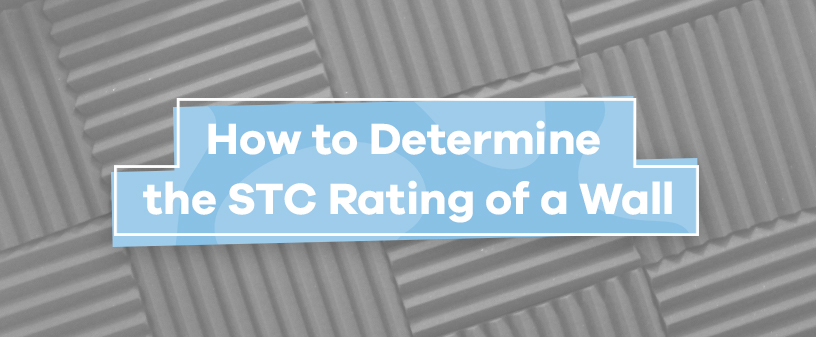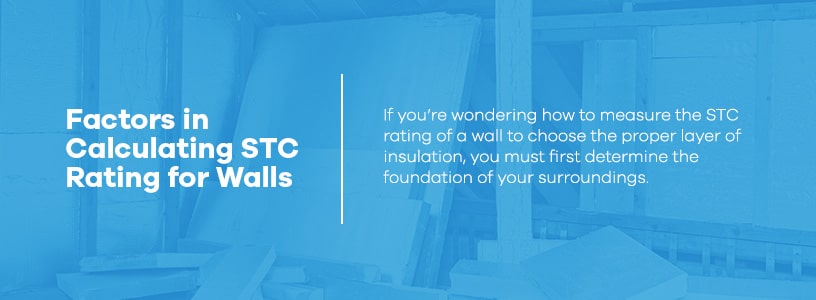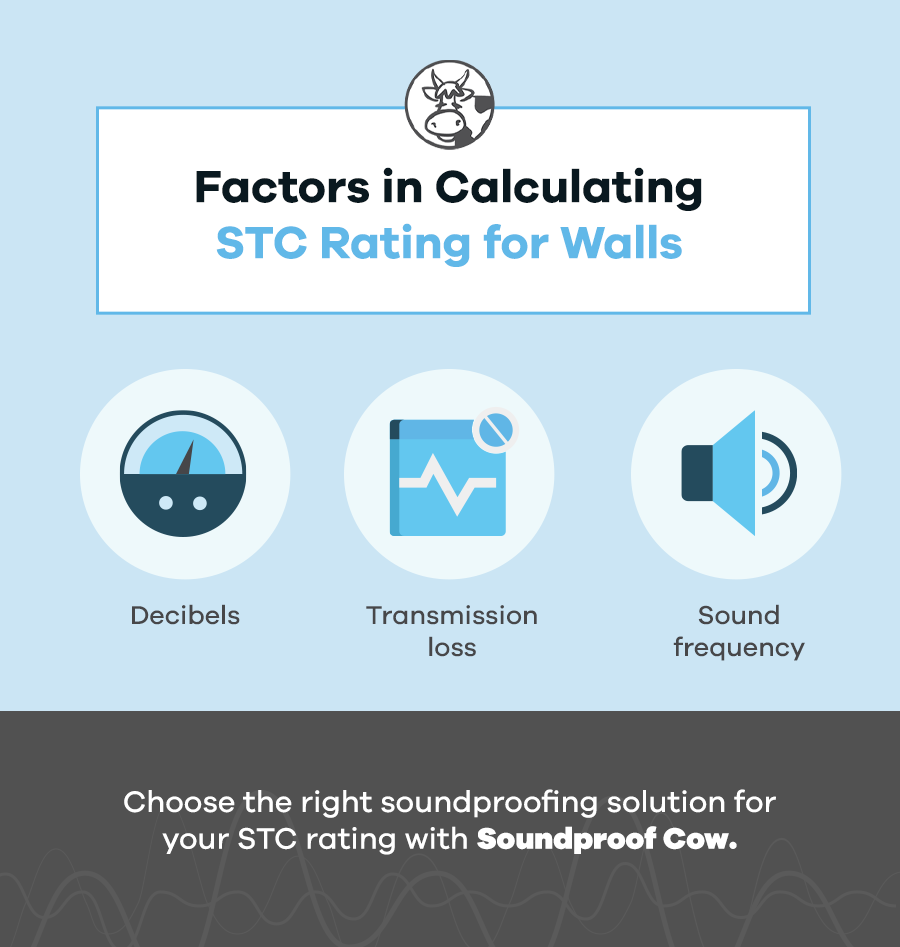
Table of Contents:
What is STC Rating
Factors to Calculate STC Rating
STR Rating Calculation
Soundproofing to Improve Your STC Rating
After suffering through unwanted sounds and reverberation for quite some time, you finally decide to soundproof your room to minimize noise and echo production. You might have dealt with noisy neighbors, unwanted traffic sounds, or even general noise pollution before installing your soundproofing material. But now, all you hear is the blissful sound of silence.
Even though the drastic change in sound quality might seem like magic, it boils down to knowing what materials to invest in based on factors such as the STC rating of your walls.
Choosing the right noise and reverberation materials for your home, apartment or business is a science. In order to achieve the maximum level of performance from your soundproofing materials, it is essential first to know the specifics of the area they will be encasing, starting with the STC ratings of your walls.
What Is an STC Rating?
The STC rating for walls refers to the “sound transmission class” of your foundation. Not all walls are the same, especially in terms of composition and material. That’s where the STC rating comes into play.
STC ratings provide valuable information for homeowners by offering them better insight into the soundproofing quality of their surroundings. This score allows you to know to what degree your wall reduces airborne noise and sound.
Shop Wall soundproofing Insulation
Factors in Calculating STC Rating for Walls
No two walls are quite the same. Perhaps your walls are extremely thin to the point where you can hear your neighbors’ every cough and sneeze. On the contrary, you may experience walls that layer you in a protective barrier of soundproofing quality that guards outside noise from leaking in and internal noise against seeping out. Whether your room boasts theater-level sound production or offers barely any protection at all, it’s important to know your wall’s STC rating nevertheless.
If you’re wondering how to measure the STC rating of a wall to choose the proper layer of insulation, you must first determine the foundation of your surroundings. Does your wall have a resilient channel? How thick is your drywall or concrete? What type of studs are apparent on your wall and how far apart is their spacing? All of the factors mentioned above contribute to your walls’ STC rating.
The factors that contribute to calculating the STC rating of a surface are:
- Decibels: This acoustic measurement calculates a noise’s volume — the higher the decibel level, the louder the noise. For example, a whisper is 30 decibels while a rock concert can reach dangerous levels of up to 140 decibels.
- Transmission loss: The transmission loss determines how many decibels are lost from one room to another when transmitted through a surface. For example, if you shout to someone in one room from an adjacent room, transmission loss calculates how much noise is lost before it reaches someone else’s ears. If your voice starts at 70 decibels and enters the room at 40 decibels, the transmission loss is 30 decibels.
- Sound frequency: This measurement defines the tone of noise. A high-pitched sound like whistling exhibits higher frequencies than low-pitched sounds like bass drums. It’s measured by the total number of sound waves produced in a second — the more sound waves produced, the higher the frequency.
How Is a Wall’s STC Rating Calculated?
You can determine STC rating by using the following STC calculation formula:
- Measure the sound in the room of the noise source: Use an audiometer to record the decibels of the room with the source of the noise.
- Measure the sound in the adjacent room: Then, go to the adjacent room and take a second recording of the number of decibels transferred.
- Calculate the transmission loss: Subtract your second measurement from the first to calculate the total transmission loss.
- Test multiple frequencies: Repeat steps one through three with around 16 different sound frequencies ranging from 125 Hz to 4000Hz. That way, you’ll get the most accurate results.
- Find the average transmission loss: Add up all the total frequencies you recorded, then divide that number by the total number of frequencies you tested. For example, if you recorded all 16 frequencies, divide your total by 16. The number you calculate is your STC rating.
Your STC calculation should fall between the range of 20 to 65, with 20 indicating the most noise transmission and 65 indicating the least noise transmission. Generally, a higher STC rating is thought to be better, but it’s also important to consider that many sources of noise complaints are below the threshold of 125 Hz. Examples that do not hit 125 Hz include sound produced by home movie theatres, drums, airplanes, and industrial equipment.
Choosing the Best Soundproofing Materials for Your Space
The curve of your wall will determine which frequency sounds it absorbs or deflects best. It’s important to understand the STC rating of your walls before soundproofing your room to find the soundproofing accessories that best match your interior specs.
When you invest in soundproofing materials for your home or business, you want to make sure you acquire the right products to best suit your needs. That’s where Soundproof Cow comes into play. Whether you’re a contractor or do-it-yourself, we provide all of the noise and echo reduction materials engineered to best suit your needs.
Some soundproofing tools we offer to improve your STC rating for your walls include:
- Quiet Batt® 30 soundproofing insulation: Soundproofing insulation fits snugly between the wood and metal studs within your walls. It absorbs airborne sounds, preventing most sounds from transferring.
- Soundproofing barriers: Soundproofing barriers are great at soundproofing high- or low-frequency airborne noises. They use layers of vinyl, foam or fiberglass to dampen sound energy and vibrations, stopping and absorbing soundwaves immediately.
For more information on our products or further assistance with your decision, feel free to reach out to one of our friendly representatives today.
Learn More About Understanding Sound
What is Reverberation of Sound
Impact Noise vs Airborne Noise








